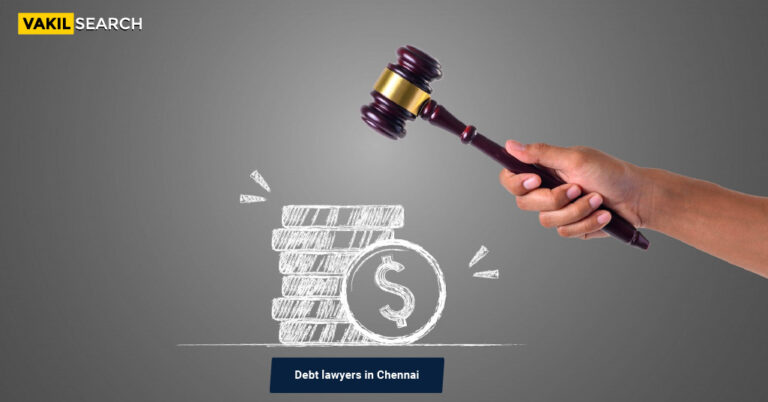With this ultimate 4-step guide to simplify your debt recovery plans, ensure that your debt recovery strategies never turn difficult again!
If you’re a business owner, you know that collecting unpaid invoices is necessary for running your company. When a customer doesn’t pay what they owe, it can be frustrating and affect your cash flow. At the same time, you need to know that it won’t always pay off to be hostile right from the start.
After all, accidents happen, and people can be in hard times. It might be that your non-paying client has forgotten about the debt or thinks they’ve already made the payment. They could even have been facing some serious personal issues and, therefore, might have been unable to come up with the lump sum amount right now.
Still, your debt recovery remains a priority, and it should be so. You can work on ways that you may employ for your debt recovery if you want to succeed with your business. This will help you ensure that you avoid severe losses along the line.
The Debt Collection Process
The debt collection process is a creditor’s attempt to recover credit and loans that customers haven’t paid back.
The main goal of the debt collection process is to recover money owed to creditors through legal action, which may include lawsuits or garnishments. In some cases, creditors will contact customers directly to collect debts owed.
Debtors are not obligated to pay collection agencies any amount that exceeds what they owe. The customer is responsible for paying any fees associated with the collection process. With the right collection strategy, you don’t just reduce the time, effort, and cost of recovering your debt. You also drive a better customer experience overall, as your customers will appreciate a measure of leniency when paying off the debt on their business account.
4 Simplified Ways to Your Debt Recovery
1. Send Account Updates in Real Time
One of the best ways to simplify your debt recovery process is by sending real-time account updates. This way, you can keep track of all your different accounts and ensure that they are up-to-date, that clients know the full extent of their dues to you, when this balance is due, and other important information. Sending account updates will also help you identify any potential issues before they become a problem, as it’s relatively easy to set up a system that notifies you when a business account has gone into debt over a certain threshold.
The primary usefulness of sending account updates to clients in real-time is that it takes one of the most common defences used by non-paying clients out of play. Suppose they’re receiving updates to their business account with you in real time. In that case, they can’t claim at a later date that they –
(a) Did not know about the debt until whenever you contacted them, or
(b) Had forgotten about the debt until you contacted them, or
(c) Thought they had paid the debt off.
If your client is receiving real-time updates, it’s tough for them to claim that they didn’t know about the debt until you contacted them. It’s also pretty hard for them to claim that they had forgotten about it or thought they had paid it off. If any of these defences come up later in a case against you, you can simply show the court evidence that you sent them updates in real-time to avoid this.
2. Integrating Behavioural Segmentation and Contact Information Into Debt Recovery Plans
Behavioural segmentation is a powerful tool for any business, especially for companies looking to recoup their debts. The more information you have about your non-paying client’s behaviour and needs, the better equipped you are to provide them with an experience relevant to their situation.
When you’re sending out debt collection letters, there are two main things you can do:
- (a) send different letters depending on whether or not the debtor has paid off their debt already, and
- (b) send different letters depending on how often they contact you about their debt.
On the topic of contacting them directly regarding the payment of their debt, you have a lot of options there too. High-level analytics and machine learning AI programs can be combined to create solutions for delivering tailored messages to clients who default on their debt. The best part is that these have a high chance of reaching hard-to-reach clients, as digital channels have proven to be the most effective (and simply hassle-free) mode of communication in the world today.
3. Implement Scheduled Tracking For the Follow Up
If you have a client that is defaulting on their debt, you may want to consider implementing a scheduled tracking system. This will ensure that you are constantly up to date on their progress and will also allow you to be ready if they need help with anything. It’s better for the client, too, because it means they don’t have to worry about missing something or forgetting about their payments. A scheduled tracking system can take several different forms, but here’s what you’re going to see commonly:
- SMS texts reminding clients about the debt on their business accounts with you, and
- Emails to the clients that remind them about their debt, the balance of the debt, the method it is to be paid in, and other such details.
The great thing about scheduled tracking is that it counts as direct evidence that you have notified the client about their debts multiple times in a court of law. While nobody wants to go to court in the first place, having this sort of backup can go a long way towards shifting the balance to your side.
Do you aware of the Must Read Topic: How to Calculate the Percentage of Bad Debt?
4. Use Debt Collection Software
A debt collection software can go a long way towards making your debt recovery strategy infinitely easier. Instead of recording the details of the debts yourself (or having an employee waste his time by doing it), a debt collection software will essentially keep track of clients, their debts, which clients have started defaulting on their debts, and other such things.
When chosen correctly (that is, a debt collection software designed by a reliable software company), these types of software can even have machine learning integrated into them so they will automatically send clients texts about their unpaid dues to your company.
The vital thing you should know when choosing debt collection software is that it’s essential not to cheap out. In most cases, this will be a one-time investment, and while it may seem expensive at first, the price won’t compare to the pure efficiency it will bring to your organisation. However, you should also ensure you’re only choosing a software system provider that is already making a name for itself. You can check those several ways, but the simplest is to check up on the projects they say they’ve worked on.
Conclusion
At the end of the day, however, you’re going to need the right kind of financial law council so that you can be fully compliant with the law’s guidelines on debt recovery. Finding a financial lawyer who can give you the help you need at a low price isn’t easy, and that’s why you need to go on Vakilsearch.
We’re known as India’s largest repository of legal professionals, with a range of thousands of legal experts who will gladly provide a free consultation about your concerns. We’re confident you can find the help you need in just minutes. Get in touch with us today.
Read more









